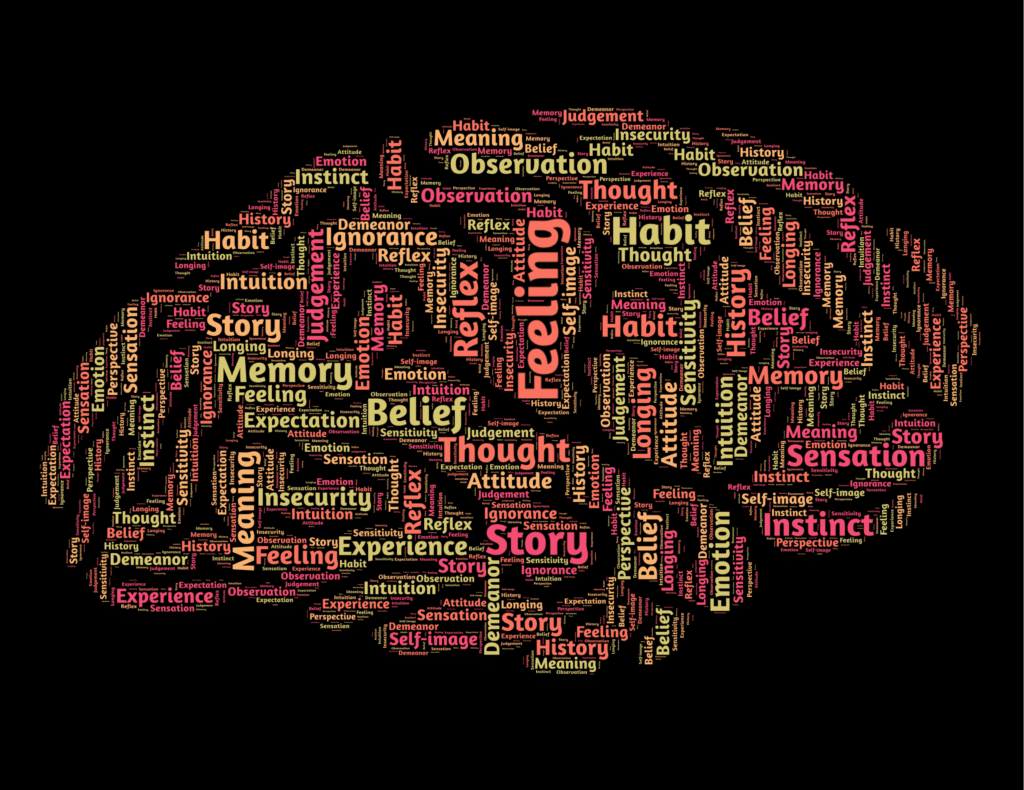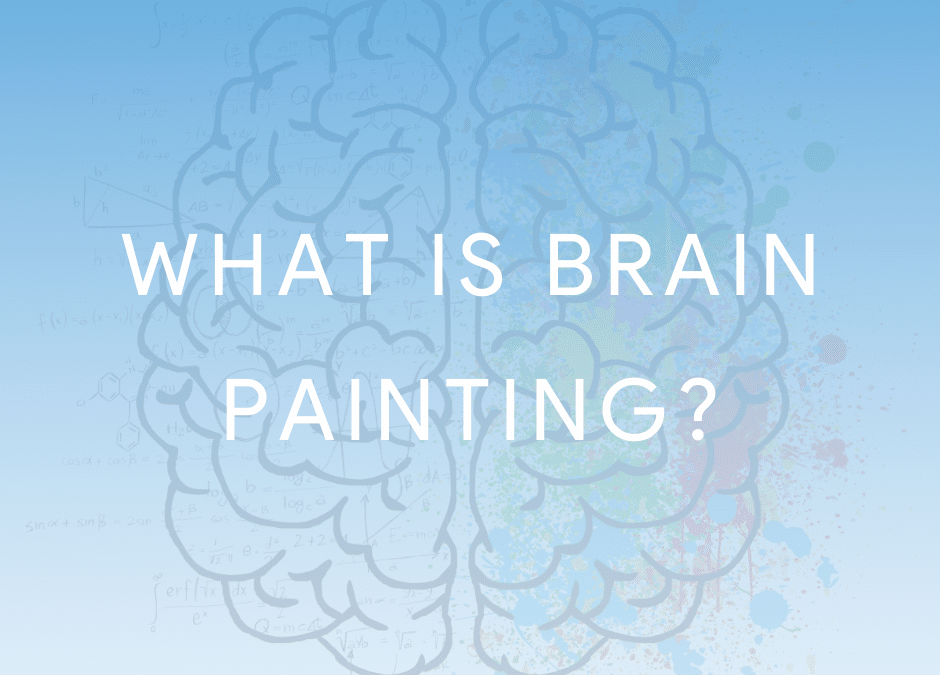Brain Painting is a form of neurofeedback therapy using biofeedback. It is designed to improve how the brain functions. Without using a brain map, it trains patients to recognize the difference between a focused state and a daydreaming state. Brain painting is an evidence-based biofeedback system that activates the brain’s natural ability to form new connections in response to experience.
Advocates of Brain painting therapy say that the treatments are a holistic way to help patients overcome problems such as addiction, depression, anxiety, mania, and social phobias.
Brain Painting and Neurofeedback Therapy

It all begins with brainwaves, which are the sum total of millions of neurons firing all at once. The number of neurons sparking in the brain at a certain frequency conveys information that defines the amplitude. Brainwaves are measured in Hertz and have a spectrum of frequencies. Each frequency spectrum carries a different meaning regarding emotions, physical movement, concentration, and creative expression. Issues happen when specific frequencies do not fire optimally for a given activity.
Feedback received during a session is information on how each brainwave frequency is performing and how the organ might improve upon that performance. Neurofeedback utilizes our natural instincts of using feedback to learn new developmental skills.
Just as with everything we learn, a beneficial lesson makes a lasting impression.
Neurofeedback is a specific type of biofeedback. Neurofeedback focuses on the central nervous system and the brain to improve neuro regulation and stabilization. Modulation of brain activity can affect behavioral changes. Feedback is provided to the patient in real-time using sounds or video images; positive feedback or negative feedback depends on whether the desired brain activity is achieved or not achieved. There appears to be some debate regarding the therapeutic role of biofeedback and neurofeedback in the treatment of patients with psychiatric disorders.
How Does It Work?
Neurofeedback is not considered a cure, but rather a method of managing or regulating the workings of the brain so it functions in a healthier manner.
This is achieved by repeated training sessions using a computerized neurofeedback program that teaches your central nervous system to reorganize and regulate brainwave frequencies. Neurofeedback assesses your brain and provides information about areas of dysfunction that are causing symptoms so that they can be treated directly.
Various neurofeedback methods and equipment are used for different types of neurological problems.
What to Look for in a Neurofeedback Therapist

Licensed mental health professionals who have been trained to use neurofeedback equipment and programs can provide neurofeedback services in their private practices and clinics.
In addition to finding someone with the educational background and relevant experience, look for a therapist with whom you feel comfortable discussing personal issues, who displays an understanding of your particular case, and who can clearly explain the neurofeedback process, its potential benefits, and its limitations in a way you can understand.
Our mission at New Roads Behavioral Health is to foster the development of happy individuals. The people that participate in our treatment programs have integrity.
When learning about treatment and the recovery process at New Roads, you will find a great deal of focus on research and we are very results-based.
Types of Neurofeedback Training
All neurofeedback techniques involve measuring and visualizing activity patterns of the brain so that the patient can gradually learn how to change the way their brain functions.
There are several different forms of neurofeedback training, which each target different aspects of brain activity.
- Slow cortical potentials (SCP)
- Hemoencephalography (HEG)
- Brain-wave training (BWT) or Frequency-band training (FBT)
In slow cortical potential training, patients learn to control the overall activity levels (excitability) of the cerebral cortex as it responds to different stimuli. The feedback uses electroencephalography (EEG) to measure the electrical activity of the brain.
In hemoencephalography training, patients learn to consciously control the level of blood flow to different parts of the brain, which can theoretically enhance or suppress different mental processes (depending on the brain area being targeted). Feedback is based on infrared light that measures oxygenated blood levels (near-infrared) or that measures the heat generated by brain activation and oxygenated blood levels (passive-infrared).
However, the most popular form of neurofeedback training is brain wave training – also sometimes known as frequency band training. EEG is used to measure different patterns of the electrical activity of the brain. This technique trains patients to increase or decrease the strength or speed of various brain waves associated with certain specific cognitive functions or mental states. The idea is that with continued feedback and practice, these “healthier” brain wave patterns could be gradually adopted by the brain – hence the theory that this could be a way of “training” the brain over time.
Helping Neurological Disorders
Studies have shown that over 60% of addicts also have a mental health or personality disorder. Living with an undiagnosed mental health condition can make an individual’s life stressful, difficult, or even dangerous, and many turn to drugs and alcohol to escape.
Therapy programs are designed to help people with neurological disorders like ADHD, anxiety, autism spectrum disorder, brain injuries, mood disorders, fibromyalgia, headaches, or sleep problems.
The American Society of Addiction Medicine defines addiction as a primary, chronic disease of brain reward, motivation, memory, and related circuitry. Dysfunction in these circuits leads to characteristic biological, psychological, social, and spiritual manifestations. This dysfunction is reflected in an individual pathologically pursuing reward and/or relief from substance use and other behaviors.
The core of the technology is that the brain can be trained to change a person’s behavior, for example with drug and alcohol addiction. Brain paint therapy essentially ‘rewires’ your brain to eliminate harmful addictions and has successfully helped many find permanent sobriety. Neurofeedback therapy typically consists of once-a-week sessions for an average of 20 weeks. Some people need fewer sessions, while others require more.
New Roads offers one-on-one therapeutic interactions by highly-trained therapists. Individual therapy motivates clients, strengthens their skills, addresses trauma, teaches target-relevant behaviors, and generalizes desirable behaviors to all necessary environments.
Neurofeedback and Anxiety

Several small studies have been done showing that neurofeedback for anxiety is effective. In each of these studies, neurofeedback training resulted in reduced anxiety. Much more and better research needs to be done. At the NeuroDevelopment Center, we have found neurofeedback for anxiety to be consistently helpful.
We recommend neurofeedback for anxiety whenever better-proven methods of treatment such as cognitive behavioral therapy have not been successful.
Many people who are dealing with mental health or behavioral health disorders benefit from the incorporation of certain prescription psychotropic medications into their treatment plans. New Roads offers many different Psychiatric Services.
We also strongly recommend that neurofeedback be done together with individual or family therapy. The quieting of anxiety networks in the brain from neurofeedback often makes progress faster in individual or family therapy. As family members, your support is crucial to your loved one’s healing process. If you are unable to attend in person, these meetings can take place over the phone, or through Skype.
Neuroscience is increasingly showing the basis in the brain for anxiety disorders. Medications just treat the symptoms and do not correct the source of the problem in the brain. The image below is from a qEEG analysis of a client with an anxiety disorder. The area in red shows excessive activation in part of the fear network in the brain. Once we see the source of the problem, we target that area for change through neurofeedback brain training. This allows you to reshape your brain, not just mask your symptoms.
Brain Painting to Help Addiction
The American Society of Addiction Medicine defines addiction as a primary, chronic disease of brain reward, motivation, memory, and related circuitry. Dysfunction in these circuits leads to characteristic biological, psychological, social, and spiritual manifestations. This dysfunction is reflected in an individual pathologically pursuing reward and/or relief from substance use and other behaviors.
Many drugs trigger the release of dopamine, which then floods the reward system circuitry with pleasurable messages. In the user, this neurological event is translated into a rush of pleasure. The brain remembers this event, and as part of its survival orientation, it sends messages to the user to keep using the drug.
In response to the surges of dopamine, the brain compensates by producing less dopamine or decreasing the number of dopamine receptors. This process is experienced in the user as drug tolerance. In the long term, this process can result in a user becoming unable to experience the healthy level of pleasure that existed before drug use.
Additional long-term effects include impairment of cognitive functioning and making the brain sensitive to drug relapse (the brain becomes conditioned to respond to certain drug use triggers like passing a bar, such that even when drug use ends, the brain is still sensitive to these environmental cues to use).
At New Roads Behavioral Health, individuals are encouraged to work on evaluating their lives and making positive changes that will help them to avoid situations that lead to drug and alcohol use. Masters-level therapists and experienced counselors work with individuals to identify their challenges and help them plan for a better life free of addiction.
Addiction is a complex illness and requires a multidisciplinary treatment approach. Neurofeedback can complement prevailing treatment methodologies, but it is not intended to be a substitute for them.
As research continues to support that addiction is a disorder or disease of the brain, the door is opened wider to advances in the scope of treatments, including neurofeedback.
Neurofeedback for ADHD
Attention deficit hyperactivity disorder, or ADHD, can affect attention, learning, impulse control, and activity levels. Symptoms can make daily life and organization challenges. As of 2016, the Centers for Disease Control and Prevention (CDC) estimated that 6.1 million children in the United States, about 9.4 percent, had received a diagnosis of ADHD at some point.
Common treatments for children with ADHD include medication, psychotherapy, and lifestyle changes, but these do not work for everyone. Some approaches — particularly medication — can have unpleasant side effects. Neurofeedback therapy is noninvasive and does not involve medication. Some practitioners believe that it can help manage symptoms of ADHD. Other names for this treatment are biofeedback and Neurotherapy.
In a person with ADHD, the brain may display characteristic patterns of behavior, particularly in the frontal lobe. This area is linked with personality, behavior, and learning. The functioning of the brain and a person’s behavior are connected. Changes in behavior can change the brain, and changes in the brain can change behavior. Neurofeedback aims to change a person’s behavior by changing their brain. Some research suggests that people with ADHD have more theta waves and fewer beta waves than people without the disorder. In theory, neurofeedback aims to correct this difference.
In theory, you can use the biofeedback sensors and monitor as a guide to help you learn to keep your brain active while concentrating or performing certain tasks. During a therapy session, they can try a variety of strategies to maintain their focus and see how it affects their brain activity. This might help you develop successful strategies to use when you’re no longer attached to the sensors.

